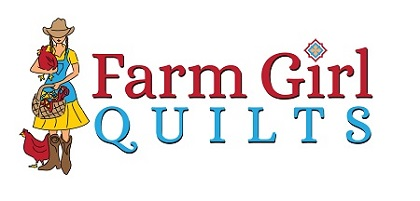Quilters spend lots of time and effort to create a quilt. They spend countless hours searching for just the right fabric and hours piecing their project. Here is Canada, fabric is expensive and a full size quilt can often cost several hundred dollars just for the materials. So in addition to time and effort, quilters spend a lot of money making a quilt. Although there is a lot of thought that goes into the quilt top, I have come to realize that most quilters don't think much about the batting they put in their project. They will spend hundreds of dollars making the quilt top and then when it comes to the batting, anything will do. So why do I care?
When I started quilting, I made a sampler quilt. It was pieced with large areas where I could do some fancy quilting. I spent hours hand quilting this project. I had envisioned what it would look like when it was finished. But it didn't turn out like I had thought it would. The areas I had spent countless hours quilting just didn't' show up like I wanted them to. The quilt was flat and lifeless. Definitely not what I had envisioned. But I didn't understand why my quilt didn't turn out like I had expected. I didn't know that my choice of batting could affect what my quilt looked like. Actually I didn't even know I had a choice of batting! I really don't want anyone else to be disappointed in their quilt like I was.
In the early 90's I was lucky enough to take a machine quilting class from Harriet Hargreaves. The night before the class, she held a trunk show and was going to talk about batting. It was amazing! I learned so much and even found out why my quilt hadn't turned out like I had expected. I had used the wrong batting for the look I was trying to achieve. ( You can thank Harriet for the choice of battings we have nowadays. She was instrumental in getting some of the battings we enjoy on the market.)
In 2001, when I got my quilting machine, I wanted to gain more knowledge on battings. I wanted to be able to advise my clients on which batting would help them achieve the look they were going for. So, I got together with some other longarm quilters. We each chose a brand of batting. We used the same fabric, thread and quilted it with the same pantograph design. Once our quilt was quilted, we cut our project in half and washed half of it. We each washed our quilt using the same detergent, water temperature and dried the squares in the dryer. When this was complete, we cut each half into squares. Each of us got 1 unwashed square and 1 washed square.
It was an amazing project and I learned some of the characteristics of the battings we tested. I learned what batting I would use if I wanted an antique looking quilt. I learned what I would use for a table topper or wall hanging as well as what batting showed off my quilting. I also learned that there were some battings I would never use. I learned what battings will draped nicely and what battings went stiff when heavily quilted. I also learned that sometimes I will need to audition my batting. I learned what battings bearded. It was a great project! But looking back, I wished we had not used only white fabric. The project would have been even more effective if we had used white fabric on one side and dark on the other. The dark fabric would have shown the bearding more easily.
As a longarm quilter, I like to continue to improve my skills so I like to attend quilt conventions like MQS, Innovations and HMQS. When I was at HMQS in Salt Lake City, I took a class from Debbie Trevino of Richland Washington. She was challenged by her quilt guild to find out as much as she could about batting. She has worked tirelessly finding out as much about batting as she could. The final result was the "Ultimate Batting Chart". It tells you how the batting is finished, what widths each batting is available in, and how far apart the batting can be quilted. As well as information about the loft, weight, and how much it shrinks. She also includes quilting methods recommended as well as how much the batting with beard and other important recommendations. It is a great document and would be a good reference for any quilter.
Debbie has made this document available to all of us as free download from her website. Since her original document, she has also done some updates which include battings that have more recently have come on the market. She has earned the title of the " Consumer reporter of battings". If you are interested in this free download, please visit Debbie's website. Cut and paste this website address into your browser.
https://www.alderavenuequilting.com/ultimate-batting-chart
When you realize what information is available in the " Ultimate Batting Chart" you will refer to it over and over.
